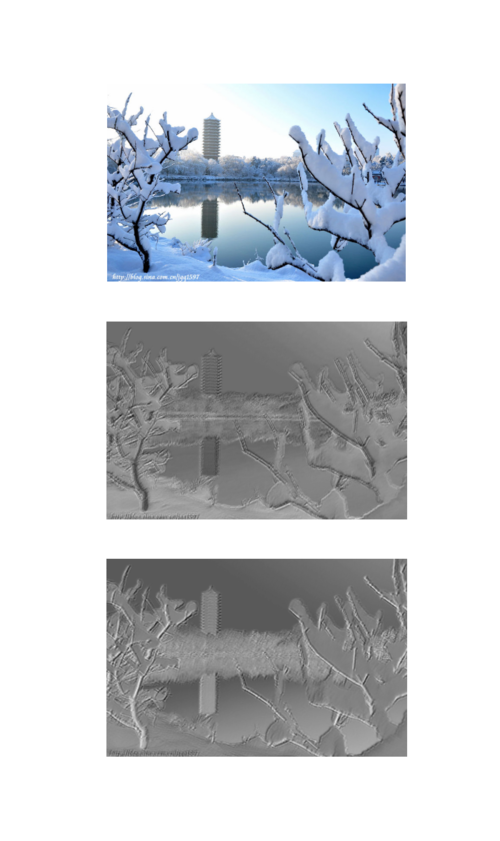使用python建模人工神经网络及进行深度学习
本篇主要由计算士整理
理论模型
本页面主要内容来自这里
有多层神经元
高层神经元控制(接受)底层神经元的输入
使用卷积来定义不同层神经元之间的作用,回忆一维卷积的效果
可以将一维卷积推广到二维卷积
卷积是很有意思的东西,是The common patterns in nature一文中的核心概念。可以简单解释如下(来自我以前写的文章《统计之道:墨子见鬼谷子》):
图层之间的作用示例
更具体完整的模型如下所示(lenet)
准备一个图像数据
我们将使用以下对图片进行处理
示例代码
import theano
import theano.tensor as T
import pylab
from PIL import Image
import cPickle, gzip, numpy
from theano.tensor.nnet import conv
rng = numpy.random.RandomState(23455)
input = T.tensor4(name='input')
# initialize shared variable for weights.
w_shp = (2, 3, 9, 9)
w_bound = numpy.sqrt(3 * 9 * 9)
W = theano.shared( numpy.asarray(
rng.uniform(
low=-1.0 / w_bound,
high=1.0 / w_bound,
size=w_shp),
dtype=input.dtype), name ='W')
b_shp = (2,)
b = theano.shared(numpy.asarray(
rng.uniform(low=-.5, high=.5, size=b_shp),
dtype=input.dtype), name ='b')
conv_out = conv.conv2d(input, W)
output = T.nnet.sigmoid(conv_out + b.dimshuffle('x', 0, 'x', 'x'))
f = theano.function([input], output)
# open random image of dimensions 639x516
img = Image.open('E:/wulingfei/pkuwinter.jpg')
(width, height) = img.size
img = numpy.asarray(img, dtype='float64') / 256.
# put image in 4D tensor of shape (1, 3, height, width)
img_ = img.swapaxes(0, 2).swapaxes(1, 2).reshape(1, 3, height, width)
filtered_img = f(img_)
plt.figure(1,figsize=(7,15))
# plot original image and first and second components of output
pylab.subplot(3, 1, 1); pylab.axis('off'); pylab.imshow(img)
pylab.gray();
# recall that the convOp output (filtered image) is actually a "minibatch",
# of size 1 here, so we take index 0 in the first dimension:
pylab.subplot(3, 1, 2); pylab.axis('off'); pylab.imshow(filtered_img[0, 0, :, :])
pylab.subplot(3, 1, 3); pylab.axis('off'); pylab.imshow(filtered_img[0, 1, :, :])
对处理结果的讨论
处理的结果如下图所示
所谓的“深度学习”(deep learning)里的“深度”其实就是人工神经网络的层次。我们这里介绍的卷积神经网络是各类深度学习模型中的一种。因为机器的增强-特别是并行计算,和数据量的加大,使得构建多层的人工神经网络模型变得可行。经过多层的处理,高层的神经元可以以非线性的方式储藏底层神经元的信息,最终形成对原始图像的抽象特征的理解。例如在这个例子中,我们识别出了图象的“边缘”。这样的学习,比起单纯地用一个分线性的分类器,例如logistic或者SVM,来理解数据里的非线性结构,无疑是更深刻的,也更贴近人脑的工作方式:使用抽象概念描述世界。
